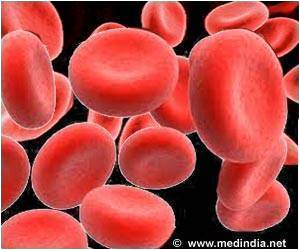Scientists have identified a protein, called superoxide dismutase, that plays a vital role in the cause and occurrence of the familial form of ALS or Lou Gehrig's disease.
In a breakthrough study, Brandeis and Harvard Medical School scientists have identified a protein, called superoxide dismutase, that plays a vital role in the cause and occurrence of the familial form of Amyotrophic lateral sclerosis (ALS) or Lou Gehrig's disease.
ALS is a fatal neurodegenerative disease caused by the death of motor neurons in the brain and spinal cord that control muscle movements from walking and swallowing to breathing.Since the last three years, Brandeis chemist Jeff Agar and his colleagues have studied the rare, familial form of ALS (fALS) as a window into the sporadic form of ALS, which accounts for 90 percent of all cases. Fifteen years ago it was discovered that mutations in the gene that makes the protein, superoxide dismutase, are responsible for inherited ALS, but how they lead to ALS is still a mystery.
Knowledge about the mechanisms at work in inherited ALS will clear the way to understanding and treating sporadic ALS as clinical symptoms are identical in both forms of the disease.
In this research it was demonstrated that fALS is caused by two synergistic properties of the protein superoxide dismutase, creating toxic levels of the protein in motor neurons.
"We discovered that increased protein unfolding and the propensity of the proteins to aggregate, (to clump together) are the major factors in the familial form of ALS," explained Agar.
This propensity of proteins to unfold and clump together amounts to what scientists call a ''toxic gain of function,’ in which a protein takes on a new role, unrelated to the one it is supposed to perform in healthy cells.
Advertisement
It was shown that protein aggregation is toxic in ALS, something that has not been proven for other neurodegenerative diseases such as Alzheimer''s and Parkinson''s, despite researchers worldwide are studying the role of protein clumps in these conditions, as well.
Advertisement
But Agar said that large clumps cause cell death, literally exploding the thread-like axons on nerve cells that transmit impulses from the cell.
"Most people are familiar with the process of aggregation, which is what happens when you cook an egg. A fluid (the egg white) is full of proteins that are free to move about. Upon cooking, these proteins unfold and clump together. When this happens inside a cell, especially inside the long, narrow, tubes that connect neurons (axons), the cells essentially choke because they can''t move proteins and nutrients to where they are needed. The loss of motor neurons then results in the death of ALS patients."
For Agar, the next step is to develop drugs that target key proteins and prevent them from clumping together.
The study is published in the latest issue of PLoS Biology.
Source-ANI
SRM










